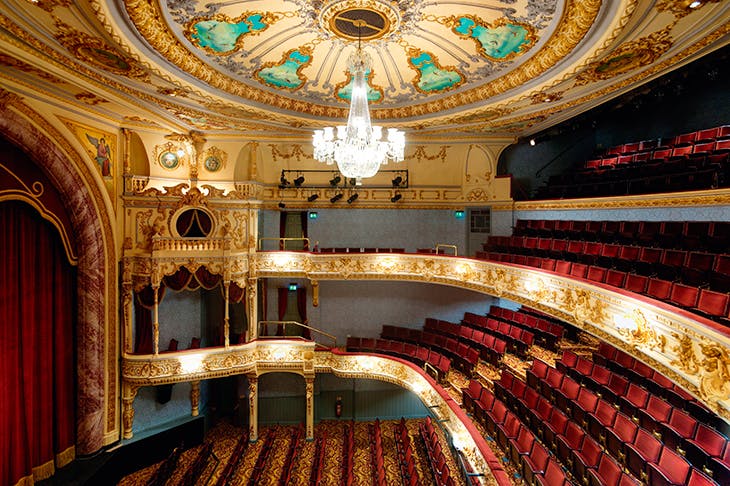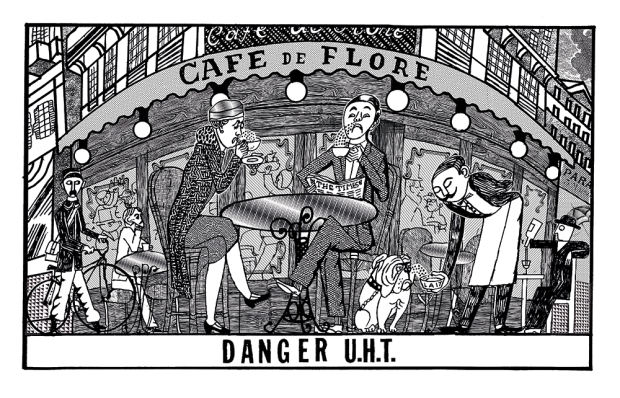Go inside the Everyman Theatre, Cheltenham, preferably when it is empty. Look round. Look up. And there it is, with its elegant decorated and gilded curves, rising to the ornate cupola, panelled in duck-egg blue. Look at the proscenium arch, the swagged red curtains with seats to match. The chandelier above the stalls. It is perfect. The lines please the eye, painting and gilding are to just the right degree of ‘Over the Top’.
You could equally well go to the King’s Theatre Glasgow or His Majesty’s Theatre Aberdeen, the London Coliseum, the Theatre Royal Wakefield or the Gaiety, Dublin, and do the same thing. Even before anything happens on stage, you are having a theatrical experience. You are in a Matcham Theatre.
Frank Matcham was born in 1854 in Devon, went to London and was apprenticed to the consulting theatre architect to the Lord Chamberlain’s Office. By 25, he had completed his first solo theatre design, and was soon training two other young men in the profession.
Between them, between 1890 and 1905, they designed more than 200 theatres. Matcham was not a man of many parts — he was the master of one — though he did design the magnificent (and now carefully preserved) County Arcade, Leeds. Theatre owners were delighted not only by the grandeur and elegance of Matcham’s designs; they also liked that his theatres were more profitable, thanks to the new steel cantilevered design of which he was a pioneer.
These meant that balconies could be built out into the body of the auditorium without the necessity for vision-restricting pillars, and so seating capacity was greatly increased. He also sited the ventilators six feet above the ground, allowing fresh air to flow without accompanying draughts. Matcham had flair and panache and a wonderful eye. He could make a 3,000-seater auditorium feel intimate, but he was also technically very accomplished.
He is probably the greatest of all theatre designers, although little is known about his personal life and, as his offices were destroyed by German bombers, there are few professional records of his work left.
Nor are most of the theatres he designed and saw built still standing. Bombs, developers, demolition, decay and philistine civic authorities saw to that throughout the 20th century.
More than 40 Matcham theatres have gone, from London and Glasgow, Brighton and Bolton, Stockport and Southport, Sheffield and Salford and Stoke-on-Trent and more. But those that remain are fully appreciated and have been restored to their former glory. We are more enlightened about conservation now and National Lottery money has greatly helped. Go to a Frank Matcham Theatre — to see a performance, of course, but also to admire, rejoice in and be thankful for the wonderful building itself.
Got something to add? Join the discussion and comment below.
Get 10 issues for just $10
Subscribe to The Spectator Australia today for the next 10 magazine issues, plus full online access, for just $10.
You might disagree with half of it, but you’ll enjoy reading all of it. Try your first month for free, then just $2 a week for the remainder of your first year.














Comments
Don't miss out
Join the conversation with other Spectator Australia readers. Subscribe to leave a comment.
SUBSCRIBEAlready a subscriber? Log in